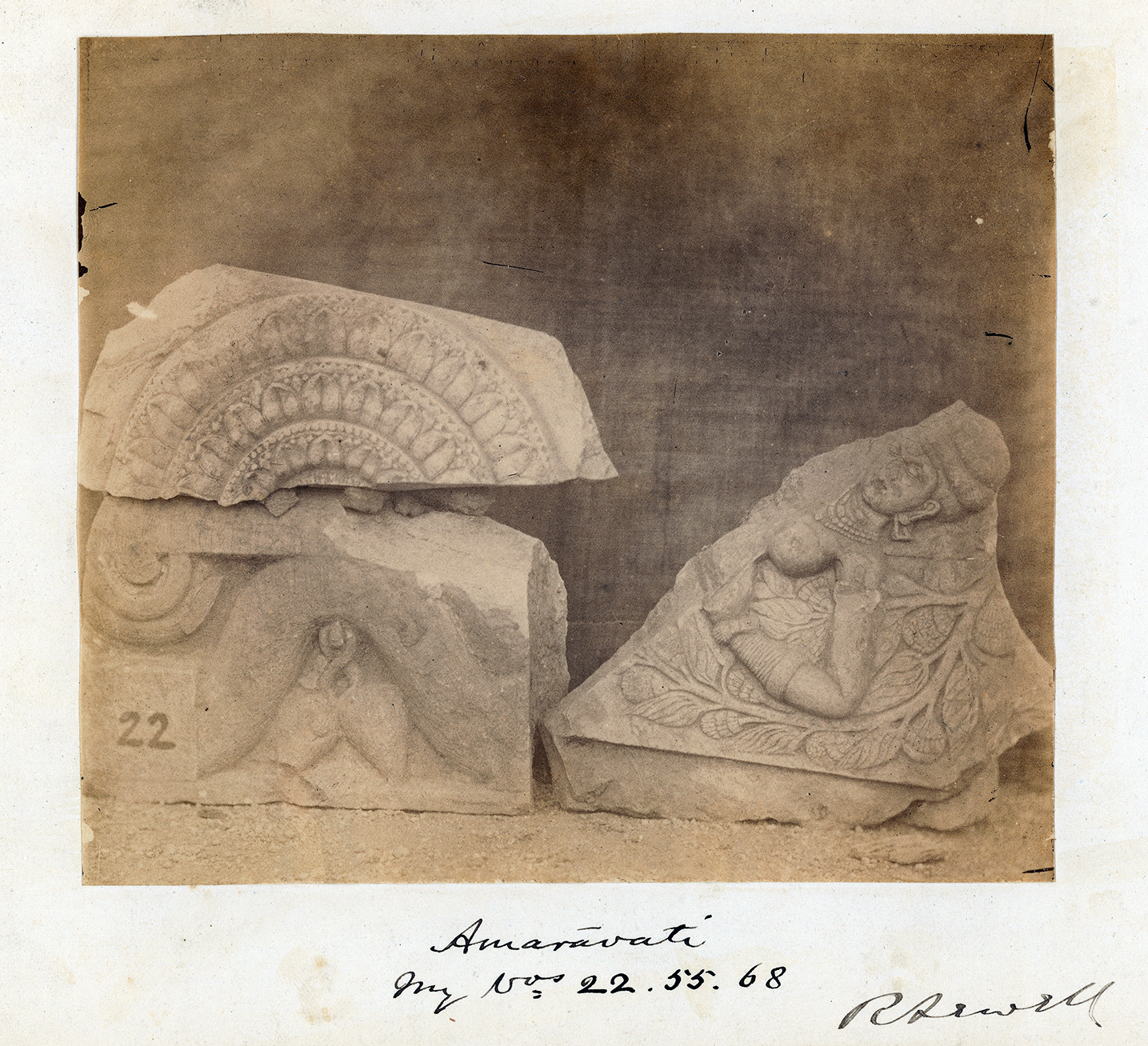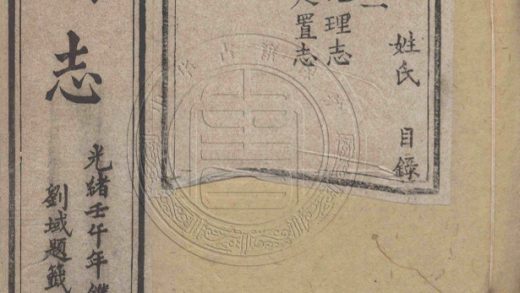【图片信息】
| 图名 | 阿玛拉瓦蒂照片011-阿马拉瓦蒂(编号22、55、68 |
| 原名 | [Photo.34/(011)] Amaravati (Nos. 22, 55, 68) |
| 分类 | 阿玛拉瓦蒂照片 |
| 文件大小(tif) | 5.63MB |
| 图片像素 | 1435×1308 |
| 图片DPI | 600×600 |
| 图片尺寸(CM) | 6.07×5.53 |
| 下载方式 | 百度网盘链接 |
| 图片格式 | TIF+JPG |
| 来源 | 英国及爱尔兰皇家亚洲学会 |
【详情介绍】
Photograph of three architectural and sculptural fragments [lotus disc, left side of face and breast of woman with leaves behind and undulating ?snake]. The reference numbers allocated to the pieces refer to Robert Sewell’s ‘Report on the Amaravati Tope, and Excavations on its site in 1877’ (London, 1880) in which the pieces are described.
‘No. 22. (2 ft. 4 in. by 10 ft. 6 in.), (Photographed). A small fragment of the Outer-Rail coping-stone roll-ornament, similar in general design to that depicted in F., LVI., but smaller. It is more the size of F., XCII., 5, but differs from that in having no supporter. This stone, in fact, is a new variety of the rail coping. In the upper fold is a half-disc. In the lower, where the supporter usually is, are two lotus buds with intertwining stems. The whole is so much weatherworn that it is difficult to say whether the roll was ornamented with scroll-work and patterns as it usually is. It would seem not. Again, the square entablature, usually bearing some elaborate design, is here quite plain. Another peculiarity is that though the stone is evidently from its shape perfect, yet the reverse was never sculptured at all, but left blank. The curvature at the top is complete, proving that the back has not been broken off. At present it is impossible to say to what this slab belonged. ‘Exactly at the top was a square hole containing the remains of an iron pin, showing that the caoping at this place was probably surmounted by some iron ornament.’
At this stage of the work my attention was directed to the east side of the circle, where, in turning the pillar (No. 17) which lay outside the east gate, a fragment (No. 55) was found underneath it. No. 55. (1 ft. 11 in. by 9 in.) A very clear cut well preserved fragment of one of the lotus discs of the rail. I had this photographed, but my artist does not do it justice.’
‘Two more stones (68, 69) were next found, amongst the earth at the southern clearance. ‘No. 68. (2 ft. 8 in. by 1 ft. 6 in.) This is a fragment which I think must have formed part of the sculptures of the western gate. It is a slab having a graceful female figure with hand on hip leaning against a tree, in attitude somewhat similar to that of the dancers or tree-devas, under the beams of the toran gateways at Sanchi. There is none like it amongst the marbles yet found at Amaravati.’
Robert Sewell
‘Report on the Amaravati Tope, and excavations on its site in 1877’ (London, 1880, p. 40, p. 49 and p. 50)
Faded print. Original negative not held. Part of a collection of twenty albumen prints mounted on card, with captions written in ink beneath the prints and all signed ‘R. Sewell’.
【中文介绍】
三块建筑和雕塑碎片的照片[莲花盘、女人脸和乳房的左侧,后面有叶子和起伏的蛇]。分配给这些碎片的参考号是指罗伯特·塞维尔的《1877年阿马拉瓦蒂巨石及其遗址发掘报告》(伦敦,1880年),其中描述了这些碎片22号。(2英尺4英寸乘10英尺6英寸),(已拍摄)。外轨顶部石卷装饰的一小部分,其总体设计与F.,LVI中所描绘的相似。,但更小。它的尺寸更大。,5,但与没有支持者不同。事实上,这种石头是一种新型的轨道顶盖。上折处有一个半圆盘。在下部,通常是支撑物所在的地方,是两个茎缠在一起的莲芽。整个卷轴已经风化严重,很难说它是否像往常一样装饰着卷轴和图案。似乎不是这样。同样,方形檐部,通常带有一些精致的设计,在这里非常朴素。另一个特点是,虽然这块石头从形状上看显然是完美的,但反面根本没有雕刻,而是空白。顶部的弯曲是完整的,证明背部没有断裂。目前无法确定这块板属于什么。”正是在顶部有一个方孔,里面有一根铁针的残骸,表明这个地方的鸟鸣可能被一些铁装饰品所覆盖。”在工作的这个阶段,我的注意力集中在圆圈的东侧,在转动东门外的柱子(17号)时,在柱子下面发现了一块碎片(55号)。(1英尺11英寸乘9英寸)一块切割得非常清晰、保存完好的轨道莲花盘碎片。我拍了这张照片,但我的艺术家没有做到公正。”接下来在南部空地的泥土中又发现了两块石头(68,69)68号。(2英尺8英寸乘1英尺6英寸)我认为这一定是西门雕塑的一部分。这是一块石板,上面有一个优雅的女性形象,手放在臀部靠在一棵树上,姿势有点类似于桑奇托兰门横梁下的舞者或树神。在阿马拉瓦蒂发现的大理石中,还没有这样的大理石。”罗伯特·塞维尔的《阿马拉瓦蒂上衣及其1877年遗址发掘报告》(伦敦,1880年,第40、49和50页)印刷褪色。原始底片未保存。卡片上挂着二十张蛋白印刷品的一部分,印刷品下方用墨水写着标题,所有签名都是“R”。塞维尔。
【图片预览】

【JPG清晰版】Photo.34-011

-第七百三十一册_1020215136_1.jpg)


